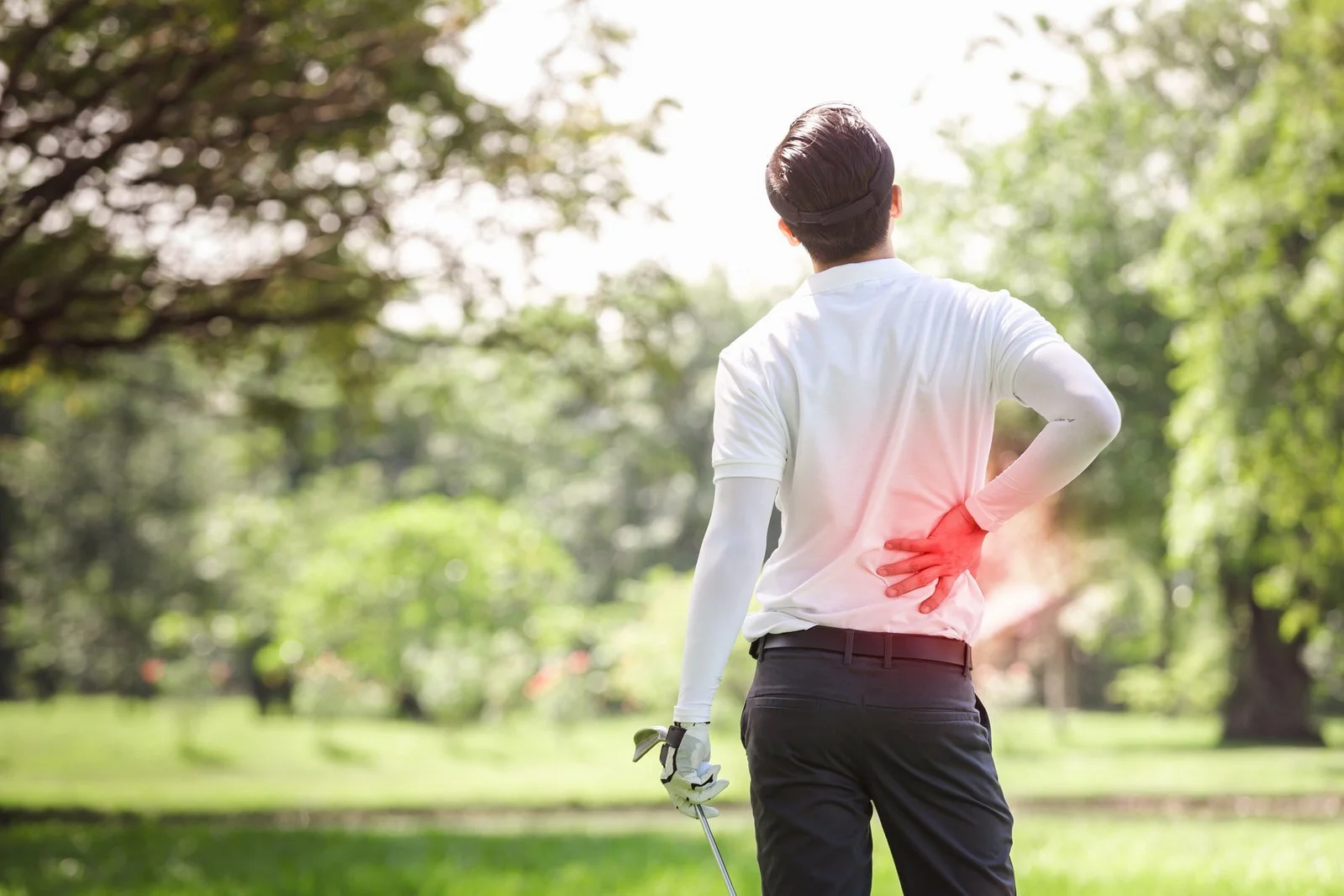What is a Disc Injury of the Neck or Back?
The disc forms a fibrocartilaginous joint between 2 vertebrae and acts as a ligament to hold the vertebrae as well acts as a shock absorber. The disc is made up of the annular fibrosis (outter layer) and nucleus pulposus (disc centre). The nucleus moves within the annulus adjusting to the pressure that is placed on your spine.
A disc injury is referred to as a herniated disc or to most patients a slipped disc. When the injury is severe enough the disc material known as the nucleus comes out of the annulus. This often causes burning or referred pain down the limb due to the irritation of the local nerve in the back (radicular pain). In severe cases it can lead to complete compression of the nerve or spinal cord (radiculopathy/sciatica).
Radicular Pain
Radicular pain is caused by inflammation and/or compression of the lumbosacral nerve roots (L4-S1) and results in a gain in nerve function. In simple terms radicular pain refers to when a nerve is irritated as it passes through the tunnel of the spine in either the neck or back. Its common patients believe the nerve is pinched, however the nerve is just irritated.
Signs and Symptoms of Radicular pain:
+ Leg pain worse than back pain
+ Positive straight leg raise
+ Pain below knee
+ Localised pain
+ Shooting pain
+ Dermatomal distribution
+ Reflexes are normal
+ Muscle strength normal
Scitica/Radiculopathy
In severe cases the disc herniation can result in Lumbar or cervical radiculopathy (also known as sciatica). This is where the nerve is being compressed and results in a loss of the nerve function. This results in a loss of sensation, weak or absent reflexes, and muscle weakness. When this follows the path of the L4-L5 and/or L5-S1 nerve this is termed sciatica. This is not a diagnosis but rather a description of the path of the pain.
Subjective examination:
+ Dominance of leg pain (more than back pain)
+ Location of the leg pain (below the knee)
+ Dermatomal pattern of pain
+ Sensory loss aligning with the spinal root
+ Changes in muscle strength of one limb
+ Reflex changes
+ Leg pain when coughing, sneezing, taking deep breath
+ Gradual onset
Physical examination:
+ Unilateral motor weakness (particularly dorsiflexion if L5 is affected, leading to foot drop)
+ Absent tendon reflexes
+ Positive SLR (if negative, this reduces suspicion of sciatica)
+ Increased finger-floor distance (>25cm)
How does a Bulging Disc Herniate or Rupture?
+ Pre-existing weakness in the annulus fibrosus
+ Sudden increase in pressure through the disc causing fibres of the annulus to tear
These 2 factors can be explored further:
1) Repeated microtrauma: If trauma is placed on the spine repetitively this can lead to an injury. Poor posture such as sitting in a bad position for long periods, and running with poor biomechanics are good examples of repetitive microtrauma.
2) Sudden increase in heavy load: Traumatic situations where a heavy load is placed on the disc when the spine is at its weakest point can lead to a disc injury. A torsion force (twisting) can cause a tear of the annulus fibres and result in a disc injury. This is commonly seen in gym settings in a deadlifting position or working in the backyard lifting heavy objects. This is why lifting acceptable loads and with the correct technique is important to reduce the risk of injury.
What is the Treatment Options for a Disc Injury?
Most bulging discs heal and are treated without surgery. The treatment is aimed at keeping the fluid to remain in the centre (nucleus) and maintaining the torn fibres of the annulus close to one another. The Physiotherapist will advise what position will help reduce the pressure on the disc and allow it to start the healing process. It’s important to remember the scarring process of the disc can take 6-12 weeks
THE DISC CANNOT BE PUSHED BACK IN BY PHYSIO! HOWEVER, THE BODY DOES HELP DISC REDUCE ITS BULGE OVER TIME
Phase 1: Pain Relief and Protection
+ Managing your pain is the first and most important step. This is best reduced by the following:
+ AVOID Aggravating movements and activities such as walking, running, sitting long periods, lifting
+ Use heat to reduce muscle spasm
+ Take anti-inflammatory and pain relief medication as prescribed by your Doctor
+ Use of manual techniques such as massage, dry needling, and gentle stretches to help reduce spasm and unload the inflamed structures.
Phase 2: Bulging Disc Exercises
As the pain and inflammation settle your Physiotherapist will look to restore the following through exercise:
+ Normal range of motion which is smooth
+ Improve muscle length
+ Reduce spasm
+ Improve muscle and motor control
+ Unfortunately, there is no 1 back program out there that improves pain and ensures you are back to 100%. All exercises are prescribed based off your current movement patterns and symptoms.
Phase 3: Return to full function
As you return to normal spinal movement, the next stage is to strengthen and control how the spine moves when its placed under increased load and tension, as well as in vulnerable positions. The Physiotherapist will slowly progress the load to ensure there is no aggravation of symptoms. The excises in this stage involve the use of body weight and small weights.
Phase 4: Preventing a recurrence
Back pain improved in 90% of cases and you should make a full recovery. When an individual experience recurrent back pain it is because they did insufficient rehabilitation and skipped the appropriate steps in rehabilitation. Unfortunately in many of our patients they want a quick fix and don’t allow the body enough time to recovery completely.

